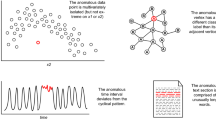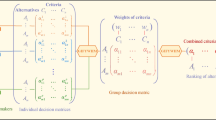Abstract
Now a day multi-dimensional data modeling and aggregate query processing which are key assets of business intelligence solutions are being frequently realized to the unorthodox data. For interval values which are recorded when the data is on hold, multidimensional aggregation is the only viable solution and the author emphasizes over this aspect in this paper. Actually, such intervals reflect the state of reality of either current data or such data which were part of the present database. Every possible challenge which interval data throws upon is resolved in this paper through introduction of aggregation operator. Although the intervals are unknown at first but they eventually depend on the actual data and it turns out to be quiet handy while associating them with the resulting tuples. Only those result groups are selected for this purpose, which are specified partially. The interval data signifies that data holds either for each interim in the interval or entire interval and in both of these two cases it faces contention with the operators. In this paper, the author presents the empirical analysis of the aggregation operator after its implementation over the huge industrial data sets and claims that it holds an edge over the other temporal aggregation algorithms.




Similar content being viewed by others
References
Aljawarneh Shadi A, Radhakrishna V, Kumar V, Vinjamuri J (2017) G-SPAMINE: an approach to discover temporal association patterns andtrends in internet of things. Future Gener Comput Syst 74:430–443
Carafoli L, Mandreoli F, Martoglia R, Penzo W (2017) Streaming tables: native support to streaming data in DBMSs. IEEE Trans Syst Man Cybern: Syst 47(10):2768–2782
Cheng K (2016) Approximate temporal aggregation with nearby coalescing. In: International conference on database and expert systems applications. Springer, Berlin, pp 426–433
Ding W, Zhang S, Zhao Z (2017) A collaborative calculation on real-time stream in smart cities. Simul Model Pract Theory 72:23–33
Kumar S, Sharma N, Duggal R (2017) Veiled endpoints: a novel dimension for aggregation. Adv Comput Sci Technol 10(5):945–963
Dyreson CE (2003) Temporal coalescing with now granularity, and incomplete information. In: Proceedings of the 2003 ACM SIGMOD international conference on Management of data. ACM, pp 169–180
Freytag JC, Goodman N (1986) Translating aggregate queries into iterative programs. In: VLDB, vol 86, pp 25–28
Gordevičius J, Gamper J, Böhlen M (2012) Parsimonious temporal aggregation. VLDB J Int J Very Large Databases 21(3):309–332
Guzzo A, Pugliese A, Rullo N, Sacca D, Piccolo A (2017) Malevolent activity detection with hypergraph-based models. IEEE Trans Knowl Data Eng 29(5):1115–1128
Halawani SM, AlBidewi I, Ahmad ABR, Al-Romema NA (2012) Retrieval optimization technique for tuple timestamp historical stint-relation temporal data model. J Comput Sci 8(2):243
Kline N, Snodgrass RT (1995) Computing temporal aggregates. In: Data engineering, 1995. Proceedings of the eleventh international conference on, pp 222–231. IEEE
Kumar S, Rishi R (2016) Retrieval of meteorological data using temporal data modeling. Ind J Sci Technol 9(37):1–10
Kvet M, Matiako K, Kvet M (2016) Managing and storing function results in temporal approach. In: Open and big data (OBD), international conference on, pp 87–94. IEEE
Lopez IFV, Snodgrass RT, Moon B (2005) Spatiotemporal aggregate computation: a survey. IEEE Trans Knowl Data Eng 17(2):271–286
Marcellino M (1999) Some consequences of temporal aggregation in empirical analysis. J Bus Econ Stat 17(1):129–136
Moon B, Lopez IFV, Immanuel V (2003) Efficient algorithms for large-scale temporal aggregation. IEEE Trans Knowl Data Eng 15(3):744–759
Navathe SB, Ahmed R (1989) A temporal stint-relational model and a query language. Inf Sci 49(1–3):147–175
Snodgrass RT, Gomez S, McKenzie LE (1993) Aggregates in the temporal query language TQuel. IEEE Trans Knowl Data Eng 5(5):826–842
Terenziani Paolo (2016) Irregular indeterminate repeated facts in temporal stint-relational databases. IEEE Trans Knowl Data Eng 28(4):1075–1079
Yang J, Widom J (2001) Incremental computation and maintenance of temporal aggregates. In: Data engineering, 2001. Proceedings 17th international conference on. IEEE, pp 51–60
Zhang D, Markowetz A, Tsotras VJ, Gunopulos D, Seeger B (2008) On computing temporal aggregates with range predicates. ACM Trans Database Syst 33(2):12
Zhou X, Wang F, Zaniolo C (2006) Efficient temporal coalescing query support in stint-relational database systems. In: International conference on database and expert systems applications. Springer, Berlin, pp 676-686
Kumar S, Rishi R (2016) A relative analysis of modern temporal data models. In: Computing for sustainable global development (INDIACom), 2016 3rd international conference on. IEEE, pp 2851–2855
Author information
Authors and Affiliations
Corresponding author
Rights and permissions
About this article
Cite this article
Kumar, S. Multi-dimensional aggregation: a viable solution for interval data. Int. j. inf. tecnol. 12, 669–675 (2020). https://doi.org/10.1007/s41870-020-00462-4
Received:
Accepted:
Published:
Issue Date:
DOI: https://doi.org/10.1007/s41870-020-00462-4




